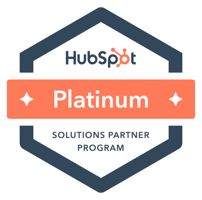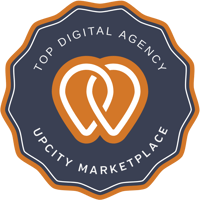"But my company already produces content," you may say. "What's the difference between normal content and 'sales enablement content?' And what's the big deal, anyway?"
The answer to the first question comes down to design and intent. Producing a ton of customer-facing content doesn't necessarily translate into content that's going to help your sales team close deals. (More on this later.)
And the answer to the second question is: poorly designed content, more often than not, equals wasted time and resources. In fact, one study found that only 30% of sales enablement efforts meet company expectations. Yikes!
The bottom line is: sales enablement content requires considerable thought and planning to be truly successful. However, when your content strategy, buyer's journey, and the needs of your sales team are in alignment, you're almost certain to see a significant boost to your bottom line as a result.
How Can You Create Sales Enablement Content?
That's really the million-dollar question, isn't it? Specifics will vary from company to company. But there are three key factors you need to understand in order to transform run-of-the-mill content into successful sales enablement content:
- What type of content you need
- What purpose it serves
- Who the primary audience is
With that in mind, let's talk about 5 common types of sales enablement content. And where they fit into the bigger picture.
Customer-Facing Content
1. Blog Posts
Blogs are great for the "awareness stage" of the buyer's journey (i.e., the top of the sales funnel). They can help spread awareness of your brand, answer common consumer questions, and get prospects interested in your product/service.
2. eBooks, White Papers, and Case Studies
These pieces of content go deeper than your average blog post. They're usually designed for buyers that have reached the "evaluation stage" of their journey. And are in the process of comparing different options before making a final purchase decision. It's important that your sales reps get familiar with what's inside. They may glean some great talking points from their study of these materials.
At the same time, it's a good idea to get some feedback from your sales team before developing these pieces. There's nothing worse than spending time and money on a new eBook. Only to find out that the leads it brings in are no good!
3. Testimonials, Reviews, and Other Forms of Social Proof
These pieces of content are closer to the "decision stage" of the buyer's journey than any other part of the funnel. The fact is, consumers won't buy from a company unless there's a certain measure of trust already present; and nothing builds trust quite like testimonials and reviews from other customers. In fact, one study found that when reviews are displayed for a product, the conversion rate can increase by a rate of 190% — or even up to 380% (depending on the price of the product)!
Of course, if your sales reps have these pieces of content in their "back pocket," they can easily use them to tell a lead (in effect): "Our product is great — but don't take our word for it! Here are what other satisfied customers have said."

Internal Content
4. Sales Scripts
A sales script is a wonderful tool to keep your sales reps "on point" when it comes to their conversations with leads. After all, you want them to hit the most persuasive selling points for your product in their interactions with potential customers.
At the same time, a script can also be a "double-edged sword." How so? For one thing, many sales reps may default to reading off the script, line by line, to a prospect. Rather than engaging in an actual conversation. Not surprisingly, that can be a huge turn-off. So you may need to train your reps on how to properly use their script without coming across like a robot or actor.
5. Competitor Comparison Sheets
These pieces of content are a powerful way to support your sales team with hard data. For example, a comparison sheet may provide them with instant talking points such as:
- "Our product offers the same features as our competitors' products — at a lower price."
- "Our product has unique features that other models don't provide."
- "When you buy from us, you'll receive a free product warranty — something that our competition doesn't offer."
You get the idea.
Pitfalls to Avoid
Creating sales enablement content should be an integral part of your overall sales & marketing strategy. However, you need to avoid some common pitfalls when creating this content if you want the best results. Here are a few examples of what we mean:
Don't focus exclusively on customer-facing content.
Many content creators are so focused on "talking to the prospect directly" that they neglect internal content that can make their sales team more successful. Remember, sales enablement is primarily focused on improving the interactions that your sales reps will have with leads.
Don't keep sales enablement content in a silo.
Sales enablement content should be developed as part of your overall content strategy. Not as a knee-jerk response to the occasional complaints of your sales team.
Don't feel that you always need to create content from scratch.
In many cases, you can easily repurpose existing content to meet the needs of your sales reps. And match up with your typical buyer's journey.
Take advantage of our free Hubspot CRM Configuration to start modernizing your sales process. This is a limited-time offer where we will design a sales pipeline specifically for your business. Start generating more revenue and improve your close rates by building your first high-performing sales pipeline on HubSpot at no cost. Simply schedule a discovery session with our team of HubSpot experts.
If you have a clear understanding of what type of content will really help your sales team, and how it will do so, then you're on the right path to creating exceptional sales enablement content. If you'd like to learn more about how sales enablement content can help you grow your business, reach out to our team at OverGo Studio today for a free consultation.


